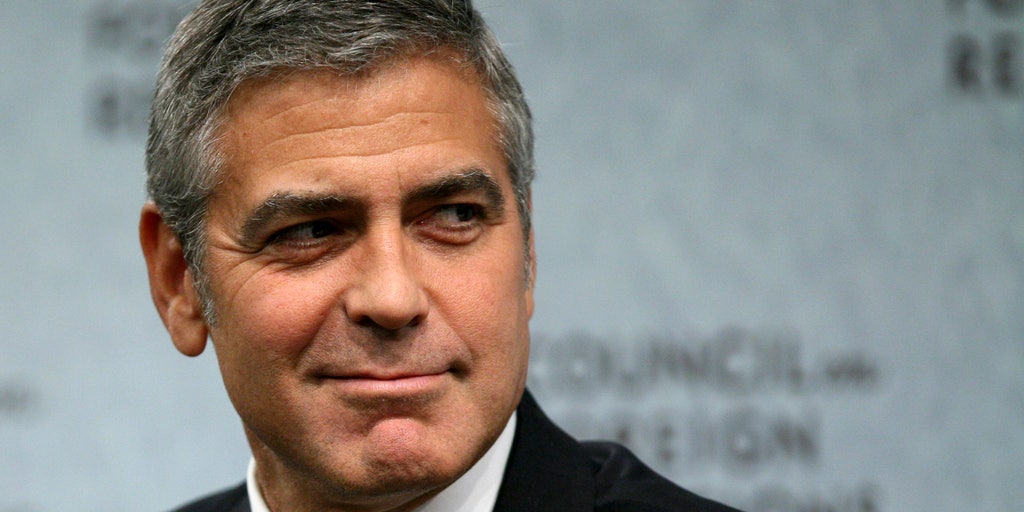Understanding the Rise and Fall of Omaze
Omaze, a charity fundraising platform, was founded in 2012 by Matt Pohlson and Ryan Cummins. The company’s mission was to revolutionize the way people give to charity by offering a unique and engaging experience. Omaze’s innovative approach quickly gained popularity, and the platform became a household name in the charity fundraising space.
Omaze’s success can be attributed to its ability to partner with high-profile celebrities and charities, offering exclusive experiences and prizes to donors. The platform’s user-friendly interface and social media integration made it easy for people to share their donations and encourage others to give. As a result, Omaze experienced rapid growth, with millions of dollars raised for various charities.
However, despite its initial success, Omaze faced challenges in recent years. The company’s business model, which relied heavily on partnerships with celebrities and charities, became increasingly difficult to sustain. The rise of new charity platforms and changing consumer behavior also posed a threat to Omaze’s dominance in the market.
As the company struggled to adapt to these changes, rumors began to circulate about its financial stability and whether Omaze was still in business. Despite these rumors, Omaze continued to operate, albeit with a reduced presence in the charity fundraising space.
Today, many people are left wondering what happened to Omaze and whether the platform is still a viable option for charity fundraising. While Omaze’s decline is a cautionary tale, it also serves as a reminder of the importance of innovation and adaptability in the ever-changing charity fundraising landscape.
Is Omaze Still in Business? Separating Fact from Rumor
As Omaze’s popularity began to wane, rumors started circulating about the company’s financial stability and whether it was still in business. Many people wondered if Omaze had shut down or was still operational. To separate fact from rumor, it’s essential to examine the available evidence.
A review of Omaze’s website and social media channels reveals that the company is still active, albeit with a reduced presence. While the platform is no longer as prominent as it once was, it continues to host fundraising campaigns and offer exclusive experiences to donors.
However, a closer look at Omaze’s financial records and business operations reveals a more complex picture. According to publicly available data, Omaze’s revenue has declined significantly in recent years, and the company has undergone significant restructuring efforts.
Despite these challenges, Omaze remains committed to its mission of revolutionizing charity fundraising. The company has adapted its business model to focus on more targeted and efficient fundraising campaigns, and it continues to partner with reputable charities and organizations.
So, is Omaze still in business? The answer is yes, but with a caveat. While the company is still operational, its reduced presence and financial struggles have led to speculation about its long-term viability. As the charity fundraising landscape continues to evolve, it’s essential to monitor Omaze’s progress and assess its ability to adapt to changing market conditions.
For those wondering about the status of Omaze, it’s crucial to rely on credible sources and verifiable information. By separating fact from rumor, donors and supporters can make informed decisions about their charitable giving and ensure that their donations are making a meaningful impact.
How to Check if a Charity Platform is Legitimate
With the rise and fall of Omaze, many donors are left wondering how to verify the legitimacy of a charity platform. To ensure that your donations are making a meaningful impact, it’s essential to research and verify the legitimacy of a charity platform before giving.
Here are some tips to help you check if a charity platform is legitimate:
1. Check for transparency: A legitimate charity platform should be transparent about its mission, goals, and financial information. Look for clear and concise language on the platform’s website and social media channels.
2. Verify registration and accreditation: Check if the charity platform is registered with the relevant authorities and accredited by reputable organizations. This information should be readily available on the platform’s website.
3. Research the platform’s leadership and governance: A legitimate charity platform should have a clear and transparent leadership structure and governance model. Research the platform’s leadership team and board of directors to ensure they have a good track record of integrity and accountability.
4. Check for red flags: Be wary of charity platforms that have a history of scandals, financial mismanagement, or lack of transparency. Research online reviews and ratings to get a sense of the platform’s reputation.
5. Evaluate the platform’s impact and effectiveness: A legitimate charity platform should be able to demonstrate its impact and effectiveness in achieving its mission. Look for clear and measurable goals, as well as evidence of success stories and testimonials from beneficiaries.
By following these tips, you can ensure that your donations are making a meaningful impact and that you’re supporting a legitimate charity platform. Remember, it’s always better to be safe than sorry, and a little research can go a long way in verifying the legitimacy of a charity platform.
Omaze’s Business Model: How it Worked and What Went Wrong
Omaze’s business model was built around a unique concept: offering exclusive experiences and prizes to donors in exchange for charitable donations. The platform’s revenue streams were primarily generated through a combination of donation fees, sponsorship deals, and advertising revenue.
Omaze’s partnerships with various charities and organizations were a key component of its business model. The platform would partner with a charity, create a fundraising campaign, and offer exclusive experiences and prizes to donors. In return, the charity would receive a percentage of the donations raised, and Omaze would take a fee for its services.
Omaze’s marketing strategy was also a crucial aspect of its business model. The platform used social media, email marketing, and influencer partnerships to promote its fundraising campaigns and reach a wider audience. However, as the company grew, its marketing efforts became increasingly expensive, and the return on investment began to decline.
So, what went wrong? Despite its initial success, Omaze’s business model was ultimately unsustainable. The company’s reliance on high-profile partnerships and exclusive experiences made it difficult to scale, and the costs associated with maintaining these partnerships became prohibitively expensive. Additionally, the company’s donation fees were often criticized for being too high, which led to a decline in donor trust and confidence.
Furthermore, Omaze’s business model was heavily dependent on the charity fundraising space, which is highly competitive and subject to fluctuations in donor behavior. As the charity fundraising landscape evolved, Omaze struggled to adapt, and its business model became less relevant.
Despite its decline, Omaze’s business model remains an interesting case study in the charity fundraising space. The company’s innovative approach to fundraising and its use of exclusive experiences and prizes as incentives for donors were groundbreaking at the time. However, the company’s failure to adapt to changing market conditions and its inability to scale its business model ultimately led to its decline.
What Happened to Omaze’s Partnerships and Fundraising Campaigns?
Omaze’s partnerships with various charities and organizations were a key component of its business model. The platform would partner with a charity, create a fundraising campaign, and offer exclusive experiences and prizes to donors. However, as Omaze’s popularity began to decline, its partnerships and fundraising campaigns also began to suffer.
Many of Omaze’s partnerships with charities and organizations were put on hold or canceled due to the company’s financial struggles. The platform’s inability to deliver on its promises and provide a stable source of funding for its partners led to a decline in trust and confidence among charities and donors.
Additionally, Omaze’s fundraising campaigns, which were once a major source of revenue for the company, began to see a decline in participation and donations. The platform’s reliance on high-profile partnerships and exclusive experiences made it difficult to scale and adapt to changing market conditions.
Despite its decline, Omaze’s partnerships and fundraising campaigns still had a significant impact on the charity fundraising landscape. The platform’s innovative approach to fundraising and its use of exclusive experiences and prizes as incentives for donors helped to raise awareness and funds for various charities and causes.
However, the decline of Omaze’s partnerships and fundraising campaigns also had a negative impact on the charity fundraising landscape. The platform’s inability to deliver on its promises and provide a stable source of funding for its partners led to a decline in trust and confidence among charities and donors.
As the charity fundraising landscape continues to evolve, it’s essential to learn from Omaze’s successes and failures. The platform’s innovative approach to fundraising and its use of exclusive experiences and prizes as incentives for donors can still be applied to modern charity fundraising campaigns.
Omaze’s Impact on the Charity Fundraising Landscape
Omaze’s impact on the charity fundraising landscape was significant, and its innovative approach to fundraising helped to raise awareness and funds for various charities and causes. The platform’s use of exclusive experiences and prizes as incentives for donors helped to engage a new generation of donors and encouraged people to give to charity in a more exciting and interactive way.
Omaze’s influence can be seen in the many charity platforms that have followed in its footsteps. The platform’s innovative approach to fundraising has inspired a new wave of charity platforms that are using similar tactics to engage donors and raise funds for good causes.
However, Omaze’s decline has also had a negative impact on the charity fundraising landscape. The platform’s inability to deliver on its promises and provide a stable source of funding for its partners has led to a decline in trust and confidence among charities and donors.
Despite this, Omaze’s legacy continues to be felt in the charity fundraising space. The platform’s innovative approach to fundraising and its use of exclusive experiences and prizes as incentives for donors have helped to raise awareness and funds for various charities and causes.
As the charity fundraising landscape continues to evolve, it’s essential to learn from Omaze’s successes and failures. The platform’s innovative approach to fundraising and its use of exclusive experiences and prizes as incentives for donors can still be applied to modern charity fundraising campaigns.
Moreover, Omaze’s decline serves as a reminder of the importance of transparency and accountability in charity fundraising. The platform’s inability to deliver on its promises and provide a stable source of funding for its partners has led to a decline in trust and confidence among charities and donors.
As a result, charity platforms must prioritize transparency and accountability in their fundraising efforts. This includes being clear about their mission, goals, and financial information, as well as providing regular updates on their progress and impact.
Alternatives to Omaze: Other Charity Platforms to Consider
While Omaze may no longer be the dominant force in charity fundraising, there are other platforms that have risen to prominence in its wake. These platforms offer a range of features, benefits, and success stories that make them worth considering for charities and donors alike.
One such platform is Classy, a charity fundraising platform that offers a range of tools and features to help charities raise money and engage with donors. Classy has been recognized for its innovative approach to charity fundraising and has helped numerous charities raise millions of dollars for their causes.
Another platform worth considering is Network for Good, a charity fundraising platform that offers a range of tools and features to help charities raise money and engage with donors. Network for Good has been recognized for its expertise in charity fundraising and has helped numerous charities raise millions of dollars for their causes.
Qgiv is another charity fundraising platform that offers a range of tools and features to help charities raise money and engage with donors. Qgiv has been recognized for its innovative approach to charity fundraising and has helped numerous charities raise millions of dollars for their causes.
These platforms, among others, offer a range of features and benefits that make them worth considering for charities and donors alike. Whether you’re looking for a platform that offers a range of tools and features or one that specializes in a particular area of charity fundraising, there are plenty of options to choose from.
When considering alternative charity platforms, it’s essential to do your research and find a platform that aligns with your goals and values. Look for platforms that offer transparency and accountability, as well as a clear and concise mission statement.
By doing your research and finding a platform that aligns with your goals and values, you can ensure that your charity fundraising efforts are successful and that you’re making a positive impact on the world.
Conclusion: The Legacy of Omaze and the Future of Charity Fundraising
Omaze’s legacy in the charity fundraising space is complex and multifaceted. While the platform’s innovative approach to fundraising and its use of exclusive experiences and prizes as incentives for donors helped to raise awareness and funds for various charities and causes, its decline has also had a negative impact on the industry.
However, the future of charity fundraising is bright, and platforms like Omaze can learn from past successes and failures. By prioritizing transparency and accountability, and by offering a range of features and benefits that meet the needs of charities and donors, charity platforms can help to create a more sustainable and effective charity fundraising ecosystem.
As the charity fundraising landscape continues to evolve, it’s essential to remember the lessons of Omaze’s rise and fall. By learning from the platform’s successes and failures, charity platforms can create a more sustainable and effective charity fundraising ecosystem that benefits charities, donors, and the causes they support.
In conclusion, while Omaze may no longer be the dominant force in charity fundraising, its legacy continues to be felt in the industry. By prioritizing transparency and accountability, and by offering a range of features and benefits that meet the needs of charities and donors, charity platforms can help to create a more sustainable and effective charity fundraising ecosystem.
So, is Omaze still in business? While the platform may not be as prominent as it once was, its legacy continues to be felt in the charity fundraising space. By learning from the platform’s successes and failures, charity platforms can create a more sustainable and effective charity fundraising ecosystem that benefits charities, donors, and the causes they support.








